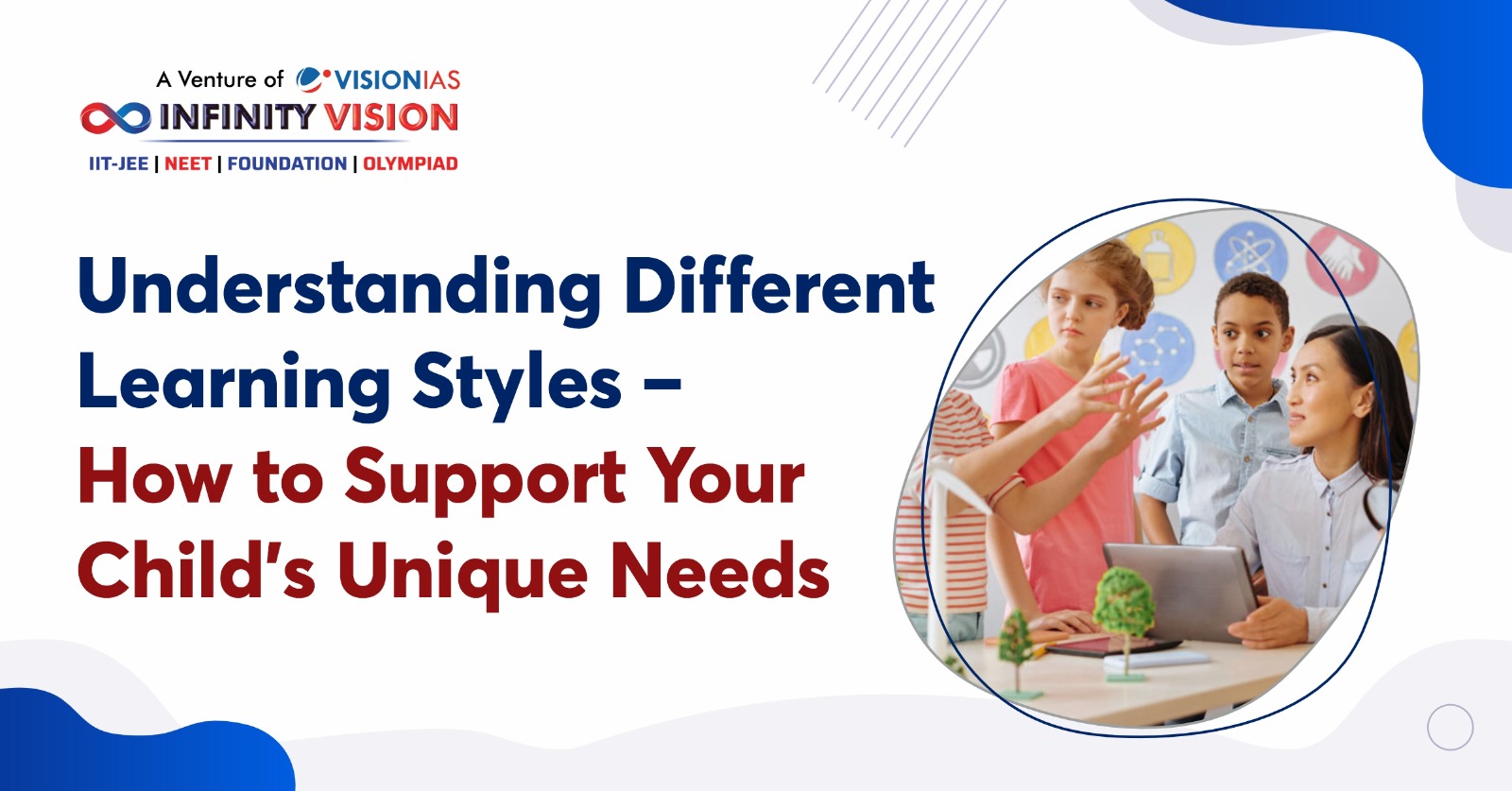Every child learns in a unique way, and understanding your child’s learning style can make a significant difference in their educational experience. Learning styles refer to the preferred ways in which individuals absorb, process, and retain information. By recognizing and catering to your child’s specific learning style, you can help them understand concepts more easily, stay motivated, and enjoy the learning process. Here’s how you can support your child’s unique needs based on different learning styles.
1. Visual Learners
Visual learners understand and remember information best when it is presented in a visual format, such as diagrams, charts, and images. They benefit from seeing information rather than just hearing it.
Characteristics of Visual Learners:
- Prefer to read instructions rather than listen
- Learn well from diagrams, maps, and illustrations
- May use colors, highlighters, or drawings to understand concepts
How to Support Visual Learners:
- Use visual aids like charts, flashcards, and videos to explain topics.
- Encourage your child to use mind maps or draw diagrams to represent information.
- Highlight key points in textbooks with different colors to make information stand out.
- Provide learning materials with illustrations or infographics.
2. Auditory Learners
Auditory learners grasp information more effectively through listening and speaking. They benefit from verbal instructions, discussions, and using sound as a learning tool.
Characteristics of Auditory Learners:
- Remember spoken instructions well
- Enjoy group discussions and oral presentations
- May prefer listening to music or background noise while studying
How to Support Auditory Learners:
- Encourage your child to read aloud while studying or use verbal repetition to remember concepts.
- Use educational podcasts, audiobooks, or recordings for lessons.
- Participate in discussions or quizzes to reinforce learning.
- Create songs, rhymes, or mnemonic devices to help them memorize information.
3. Kinesthetic Learners
Kinesthetic learners learn best through hands-on activities and movement. They benefit from physical engagement with learning materials and real-world experiences.
Characteristics of Kinesthetic Learners:
- Prefer learning through touch, movement, and activities
- May struggle with traditional classroom settings that involve sitting still
- Excel in practical tasks like experiments, building models, or using tools
How to Support Kinesthetic Learners:
- Include hands-on activities such as experiments, crafting, or building projects to explain concepts.
- Use interactive tools like puzzles, models, or educational games.
- Allow your child to move around while studying or take frequent breaks.
- Incorporate physical activities into learning, such as acting out historical events or using gestures to remember information.
4. Reading/Writing Learners
These learners find reading and writing to be the most effective ways to learn and understand new information. They prefer text-based input and output, such as reading textbooks, taking notes, or writing essays.
Characteristics of Reading/Writing Learners:
- Enjoy taking notes and making lists
- Prefer reading books, articles, and essays for learning
- Excel in written tasks, such as reports or essays
How to Support Reading/Writing Learners:
- Provide plenty of books, articles, and other text-based resources.
- Encourage your child to take notes during lessons and rewrite them for better understanding.
- Use writing exercises, such as summarizing information or answering questions in essay format.
- Incorporate reading assignments into daily study routines.
5. Logical/Mathematical Learners
Logical learners excel at reasoning, problem-solving, and understanding patterns. They thrive in environments that involve analytical thinking and structured tasks.
Characteristics of Logical/Mathematical Learners:
- Enjoy solving puzzles and complex problems
- Prefer subjects like math and science that involve logical reasoning
- Can identify patterns and connections easily
How to Support Logical Learners:
- Use problem-solving activities, puzzles, and strategy games to make learning engaging.
- Encourage your child to outline steps or create lists to solve problems.
- Include subjects like math and coding that involve logical reasoning.
- Relate learning material to real-life situations that require analysis.
6. Combination Learners
Many children do not fit neatly into one learning style and may have a combination of preferences. For example, they might be primarily visual learners but also benefit from kinesthetic activities.
How to Support Combination Learners:
- Mix different learning techniques, such as combining visual aids with hands-on activities.
- Observe which methods work best for different subjects and adapt accordingly.
- Provide a variety of resources, like videos, books, and practical tasks, to engage multiple senses.
Conclusion
Understanding your child’s learning style can greatly improve their educational experience by tailoring teaching methods to their strengths. Whether they are visual, auditory, kinesthetic, or a combination of different styles, the key is to provide a variety of resources and activities that cater to their preferences. By supporting your child’s unique needs, you can help them develop a love for learning and achieve their full potential. To explore more helpful parental tips and insights tailored for your child’s growth, visit our page: Parent’s Sphere by Infinity Vision

Leave a Reply